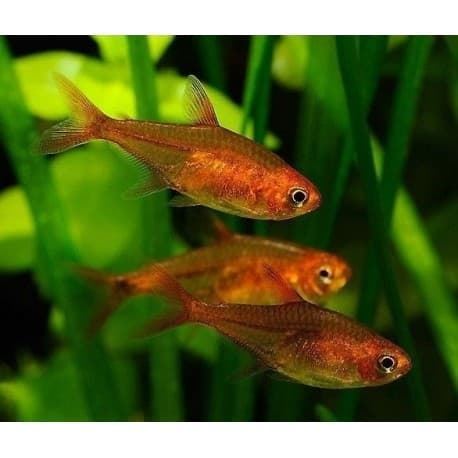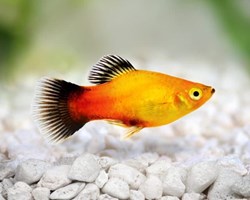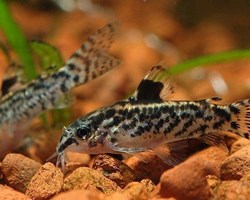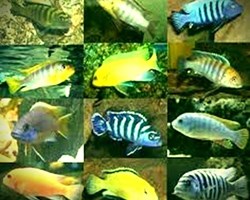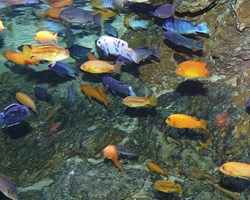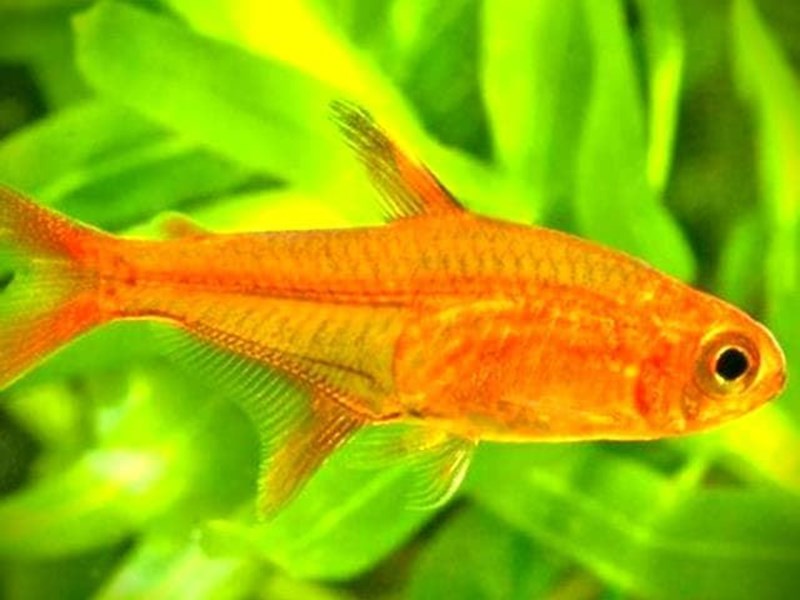

INDEX:
1.- DESCRIPTION.
2.- DISTRIBUTION.
3- CONDITIONS OF THE AQUARIUM.
4.- NUTRITION.
5.- BEHAVIOR.
6.- REPRODUCTION.
1.- DESCRIPTION:
Common name: Amber Tetra.
Scientific name: Hyphessobrycon amandae
• Order: Characiformes
• Family: Characidae
• Subfamily: Hyphessobrycon.
Does not exceed 2cm.
Amber tones and some dark spots on the fins.
The males show a coppery coloration, the females have a somewhat paler color, a more bulging belly and a more robust complexion, being also a little larger.
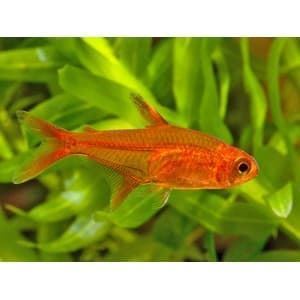
2.- DISTRIBUTION:
South America, they are found in the basins of the Araguaia River.
It inhabits calm, soft, acid and amber. It is usually below the vegetation.
3.- CONDITIONS OF THE AQUARIUM:
The ideal is a biotope aquarium in which we could put dark-colored sand such as akadama, various roots and dry leaves. We should also use peat in the filtration, both to tint the water amber and to lower the pH and hardness. Some floating plants with long roots can be added.
Aquarium of 40 liters and up for a group of 6 to 10 individuals. It is preferable that the aquarium has a length greater than 40 cm. Peat filtration is recommended. As for decoration, floating plants, roots, rocks. It is preferable that the substrate is dark, so the colors of the fish will stand out more.
It can also be kept in community aquariums as long as the water requirements are met.
suitable as well as that it is a fairly planted aquarium or with enough hiding places.
Ideal water conditions would be:
PH: 5.5 – 6.5 (although it tolerates pH a little above 7).
KH: 0º-1º
GH: 1st-3rd
NO3: 0-5mg/l
NO2: 0mg/l
NH4+: 0mg/l
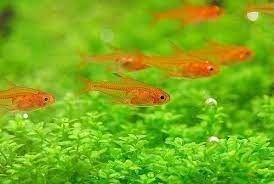
4.- NUTRITION:
Omnivore.
Accepts mosquito larvae, brine shrimp, daphnia, tubifex, worms, small crustaceans, etc.
Also all kinds of commercial foods: flakes, granules, spirulina, pills...
It is important to provide live food regularly to increase coloration.
5.- BEHAVIOUR:
It is a very peaceful fish with a very shy behavior, it likes to be in groups that preferably will be of more than 10 specimens, although we can keep them in groups of 6.
It is small but very active.
It is usually hidden in inconspicuous areas.
Very suitable species for the community aquarium, as long as it is associated with species of similar size and behaviour. Do not associate with very active species, as they will not compete very well for food, nor with large species that form territories, as these will oppress them and may become part of their diet.
6.- PLAYBACK:
It's hard.
We must prepare a reproduction aquarium of about 20 liters in which we will put fine-leaved plants or mosses, the water temperature should be around 27 ° C.
It is advisable to feed the parents for 3 weeks beforehand with live food.
Introduce the couple in the breeding aquarium, when they lay, we will remove them.
At 36 hours the eggs hatch and the fry must be fed with infusoria until they can accept brine shrimp nauplii or other fry food.
We need a 20-30 liter tank with dry leaves, floating plants and low light and some java moss so they can lay their eggs.
We will have to maintain it with acidic water, with a pH around 5.5 and 6, a low total hardness, between 1º and 5ºdGH.
The ideal is to carry out a filtration with peat.
The temperature should be around 27º C.
When they start swimming they can be fed brine shrimp.
